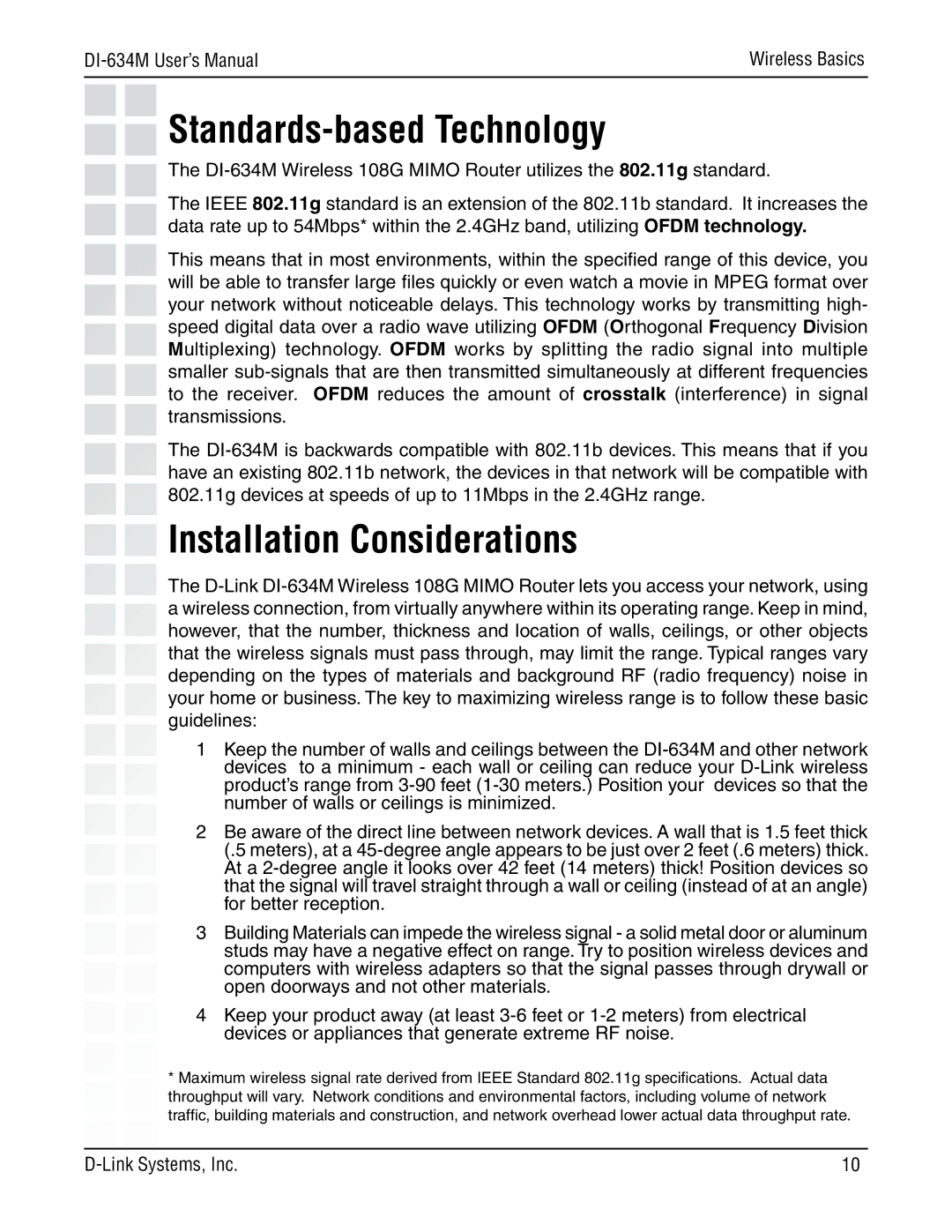
Wireless Basics | |
|
|
Standards-based Technology
The
The IEEE 802.11g standard is an extension of the 802.11b standard. It increases the data rate up to 54Mbps* within the 2.4GHz band, utilizing OFDM technology.
This means that in most environments, within the specified range of this device, you will be able to transfer large files quickly or even watch a movie in MPEG format over
your network without noticeable delays. This technology works by transmitting high-
speed digital data over a radio wave utilizing OFDM (Orthogonal Frequency Division Multiplexing) technology. OFDM works by splitting the radio signal into multiple smaller
The
have an existing 802.11b network, the devices in that network will be compatible with 802.11g devices at speeds of up to 11Mbps in the 2.4GHz range.
Installation Considerations
The
however, that the number, thickness and location of walls, ceilings, or other objects that the wireless signals must pass through, may limit the range. Typical ranges vary
depending on the types of materials and background RF (radio frequency) noise in your home or business. The key to maximizing wireless range is to follow these basic guidelines:
1Keep the number of walls and ceilings between the
2Be aware of the direct line between network devices. A wall that is 1.5 feet thick (.5 meters), at a
3Building Materials can impede the wireless signal - a solid metal door or aluminum studs may have a negative effect on range. Try to position wireless devices and computers with wireless adapters so that the signal passes through drywall or open doorways and not other materials.
4Keep your product away (at least
* Maximum wireless signal rate derived from IEEE Standard 802.11g specifications. Actual data throughput will vary. Network conditions and environmental factors, including volume of network traffic, building materials and construction, and network overhead lower actual data throughput rate.
10 |
